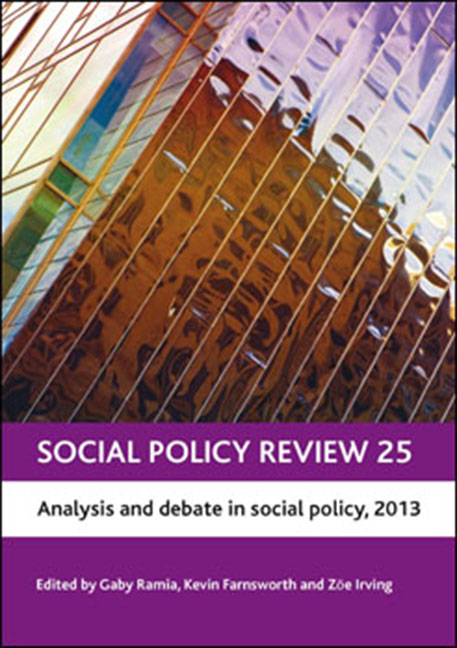Book contents
seven - Square pegs and round holes: extending existing typologies fails to capture the complexities of Chinese social policy
Published online by Cambridge University Press: 03 February 2022
Summary
Introduction
The last 30 years have been a time of profound change in China. The shift from a planned to a market economy has gathered pace, and from being considered an economically poor country just three decades ago, China now boasts the second-biggest economy in the world (IMF, 2011). This Chinese miracle of huge and rapid economic growth has brought China along with many other Asian nations into focus, with recent predictions suggesting that within the next 40 years, over half of global Gross Domestic Product (GDP) will be concentrated within the region (ADB, 2011). With attention focusing on China's stellar economic performance, many have sought to explain its economic success and understand the consequences that this is having, and is set to have, on social policies in the country (Wilding, 2008, p 18).
It is noted that China faces many key social policy dilemmas, which are thrown into even sharper relief given the attention China's economic performance has garnered. In particular, commentators have written extensively on the key question of the distribution of the benefits of growth beyond key cities/regions and beyond key elites (Guan, 2001, p 243; Kwon, 2005a, p 479; Redding and Witt, 2007, p 128; Zhang, 2009, p 227; OECD, 2010a, p 131; Yang et al, 2010, p 237). Similarly, there has been much commentary regarding the huge differential between both the resources apportioned to and the welfare outcomes experienced in rural and urban areas (Guan, 2001, p 245; OECD, 2010b, p 113; Yin, 2004; Zhang, 2009, p 230). Added to this are discussions around China's increasingly ageing and dependent population and the burden this is likely to place on the state (Zhang, 2009, p 227; ADB, 2011, p 20; OECD, 2011a, p 10; 2011b, pp 45, 51). It has been argued that this ageing of the Chinese population represents the key challenge for any programme of social welfare; the existence of large numbers of retirees is in fact a relatively recent phenomenon for a country with a historically young population (Kwon, 1997, p 475; Ramesh, 2004, p 324; Vodopivec and Hahn Tong, 2008, p 31; Glenn, 2009, p 38).
- Type
- Chapter
- Information
- Social Policy Review 25Analysis and Debate in Social Policy, 2013, pp. 129 - 148Publisher: Bristol University PressPrint publication year: 2013



